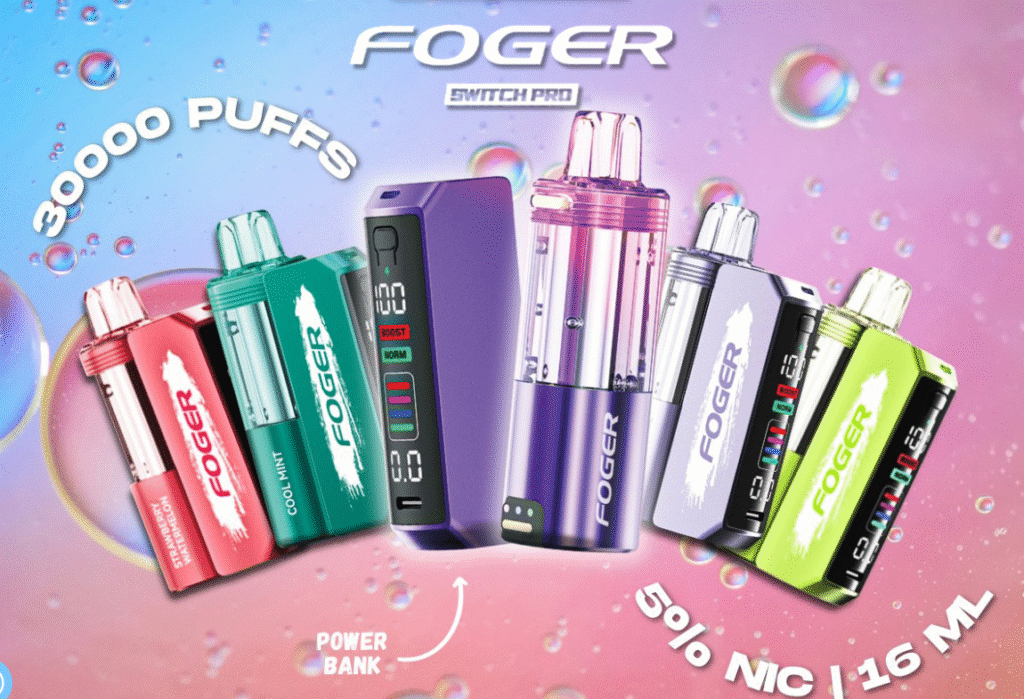Vaping and Sustainability: How Technology is Driving Eco-Friendly Smoking Alternatives

Sustainability is no longer just a buzzword — it’s a global necessity. With climate change, resource depletion, and plastic pollution dominating headlines, industries worldwide are rethinking their environmental impact. From electric vehicles to biodegradable packaging, innovation is at the heart of this transformation. The smoking alternatives sector, including vaping, is no exception.
While vaping is often seen as a lifestyle choice, it’s now being reexamined through the lens of environmental responsibility. Surprisingly, the very technology that powers these devices could hold the key to a more sustainable future.
The Hidden Environmental Cost of Smoking
When people think about the harm caused by smoking, they often focus on personal health. However, the environmental toll of traditional cigarettes is equally alarming. Cigarette butts are the most littered item on the planet, with an estimated 4.5 trillion discarded annually. Many of these end up in waterways, leaching toxic chemicals into ecosystems.
Beyond litter, tobacco production drives deforestation, pesticide use, and excessive water consumption. Even the packaging and logistics of tobacco products contribute significantly to carbon emissions.
Vaping emerged as a cleaner alternative to smoking, but its early iterations — particularly disposable vapes — introduced new environmental challenges. These single-use devices often contain non-biodegradable plastics, batteries, and circuit boards, creating a growing e-waste problem. Their lack of recyclability compounds the issue, making them a paradox: a product marketed as a cleaner option that generates its own form of pollution.
Revolutionizing Vaping Through Technology
Fortunately, innovation in vaping technology is rapidly addressing these challenges. Much like other industries that are shifting toward modular and durable designs, the vaping sector is undergoing a quiet revolution.
The key lies in separating components. Instead of discarding an entire device, newer designs allow users to replace individual parts — such as flavor pods or cartridges — while retaining the core hardware. This simple yet impactful change significantly reduces waste over time.
Some forward-thinking brands are already leading this charge. Like Off Stamp, Foger Vape (website), they’re introducing modular systems that combine convenience with sustainability. Their advanced systems now feature high-capacity reusable batteries and disposable pods. These innovations not only enhance user experience but also minimize environmental impact.
The longevity of these devices is a game-changer. A modular vaping system reusable battery that lasts for months or even years can drastically reduce the number of batteries, plastics, and heavy metals ending up in landfills.
Designing for Sustainability
At the heart of any eco-conscious product is durability and adaptability. For vaping devices, this means longer battery life, robust materials, and the ability to replace internal components without discarding the entire device.
Modern systems are also incorporating energy-efficient chipsets, which optimize battery usage and reduce charging frequency. This not only conserves energy but also extends the device’s overall lifespan.
Another overlooked but critical feature is information access. Devices equipped with OLED screens or usage indicators allow users to monitor battery levels and remaining e-liquid. This level of control encourages mindful consumption and reduces unnecessary waste.
As consumers become more environmentally conscious, demand is growing for devices with recyclable components, sustainable packaging, and even flavor pod take-back programs. Some manufacturers are experimenting with bioplastics and plant-based materials, paving the way for more sustainable production and disposal practices.
Beyond Hardware: Encouraging Sustainable Habits
Technology alone can’t drive sustainability — it must be paired with responsible user behavior. This is where smart device design plays a crucial role in shaping habits.
For instance, vaping devices that track puff counts or display consumption data subtly guide users toward less wasteful practices. Modular systems also discourage impulsive purchases, as users can simply swap pods instead of buying entirely new devices. This not only reduces waste but also lowers costs for consumers.
Ultimately, a sustainable vaping device isn’t just about its materials — it’s about how it’s used and how long it lasts. The convergence of intuitive technology and intentional use is key to creating a more eco-friendly vaping culture.
Flavorful Without the Waste
One common argument for disposable vapes is their variety of flavors. These devices often come preloaded with unique blends, from fruity concoctions to refreshing mint. However, modular systems are now offering the same diversity, with prefilled pods that can be swapped instantly without compromising the device itself.
This means users no longer have to choose between flavor variety and environmental responsibility. In fact, many report improved flavor consistency and quality with modular systems compared to disposables. Additionally, reputable manufacturers prioritize maintaining flavor integrity over time, ensuring a better overall experience for users.
Quiet Progress, Big Impact
The shift toward sustainable vaping may not always make headlines, but its impact is undeniable. Devices are becoming smarter, more durable, and more efficient, signaling a broader lifestyle change where technology and sustainability intersect.
Brands embracing modular, mobile, reusable designs are at the forefront of this movement. They’re not just creating better products — they’re empowering users to make better choices. In doing so, vaping evolves from a habit into a statement about mindfulness, responsibility, and our collective role in building a cleaner future.
Final Thought: A Greener Path Forward
While vaping may never be entirely free of environmental impact, it can move closer to sustainability through smart design, modular systems, and longer-lasting devices. For consumers seeking alternatives that align with their values, these innovations offer a compelling opportunity: to enjoy the experience without perpetuating disposable culture.
Though not all brands are embracing this shift, a few are quietly leading the way. Their efforts remind us that even small changes can have a big impact — one puff at a time.







